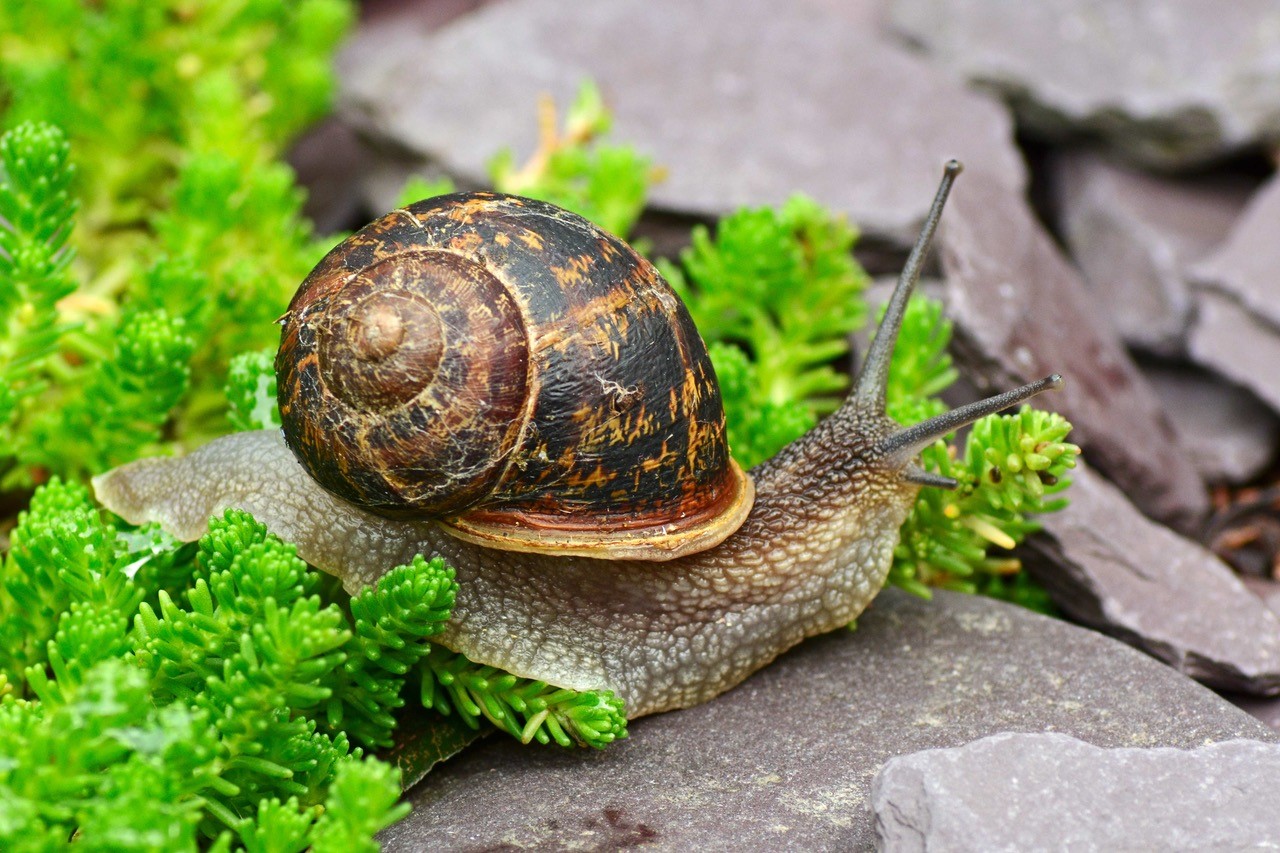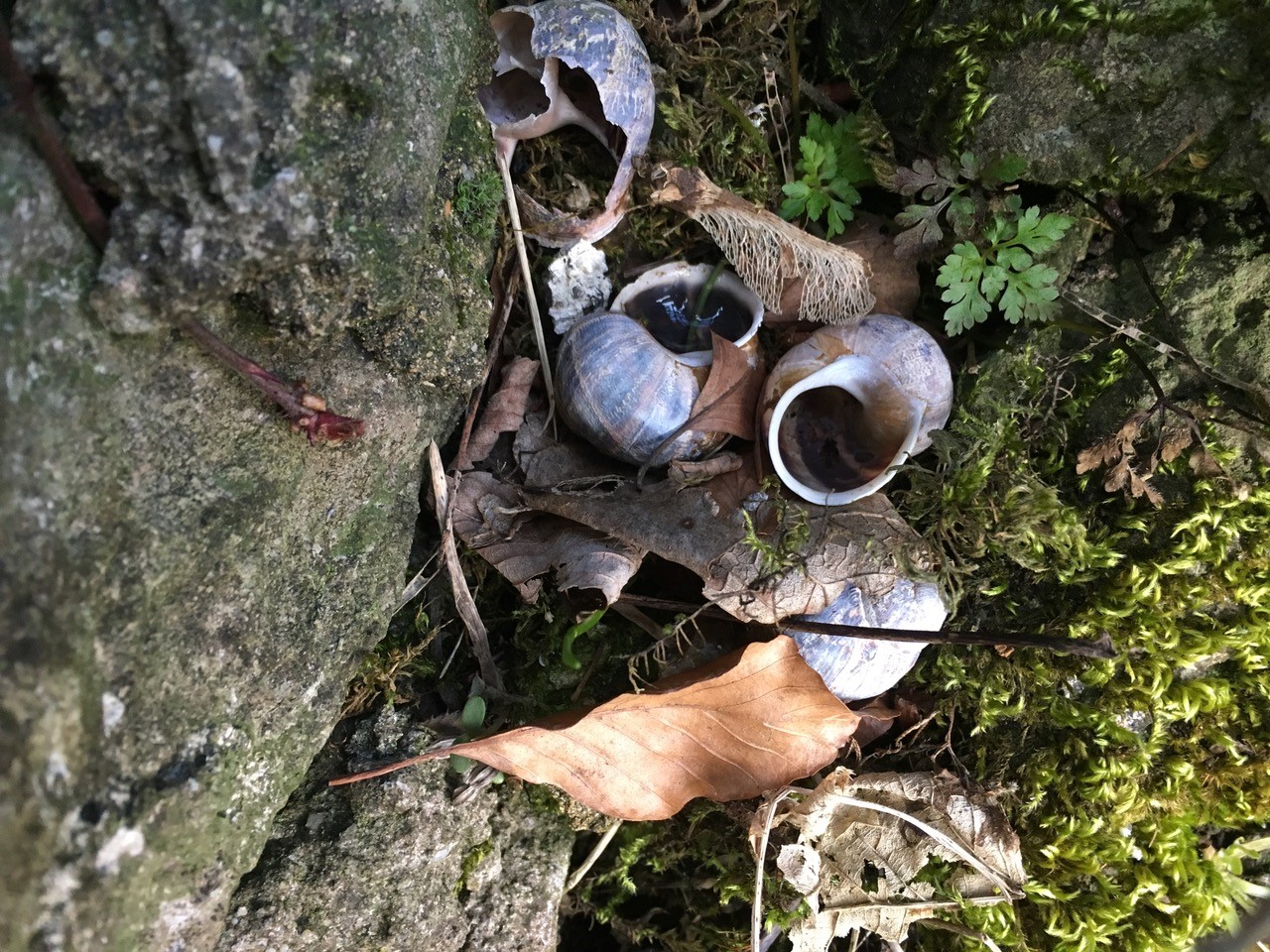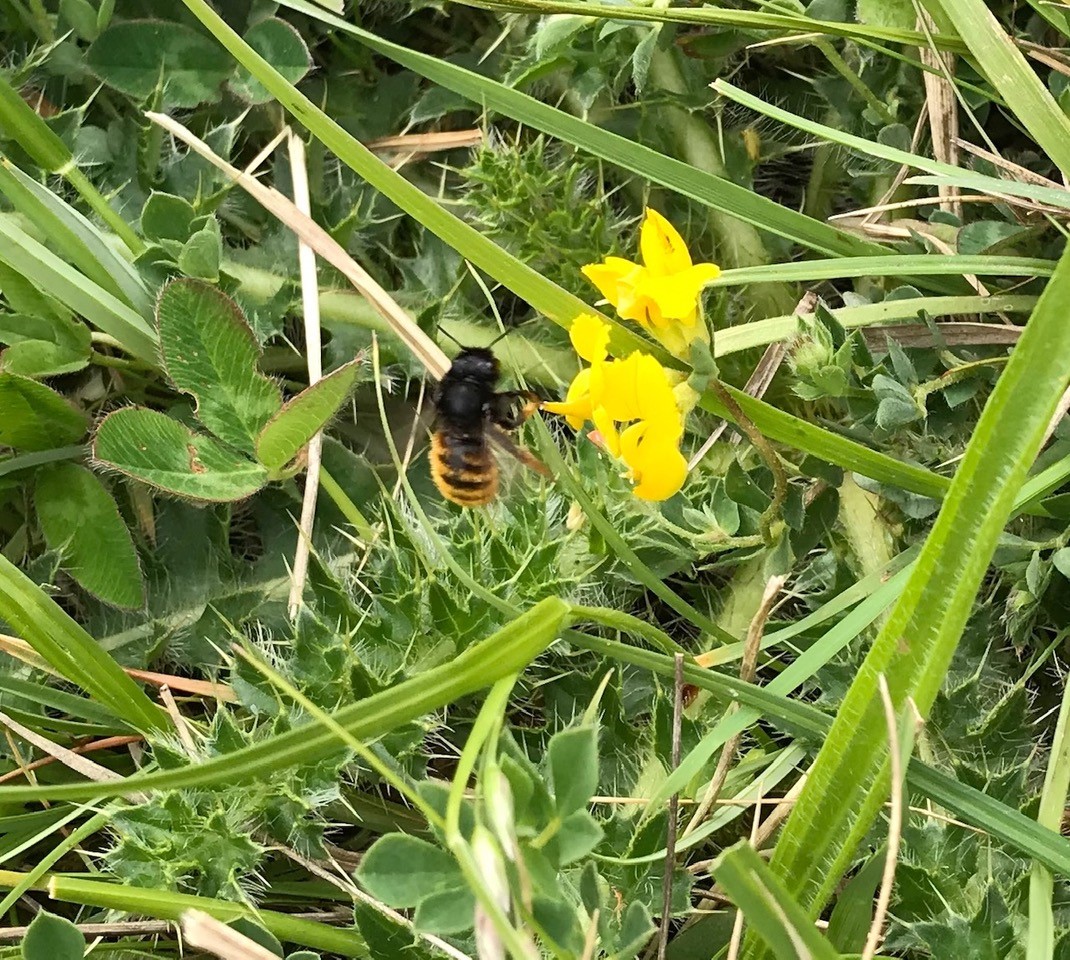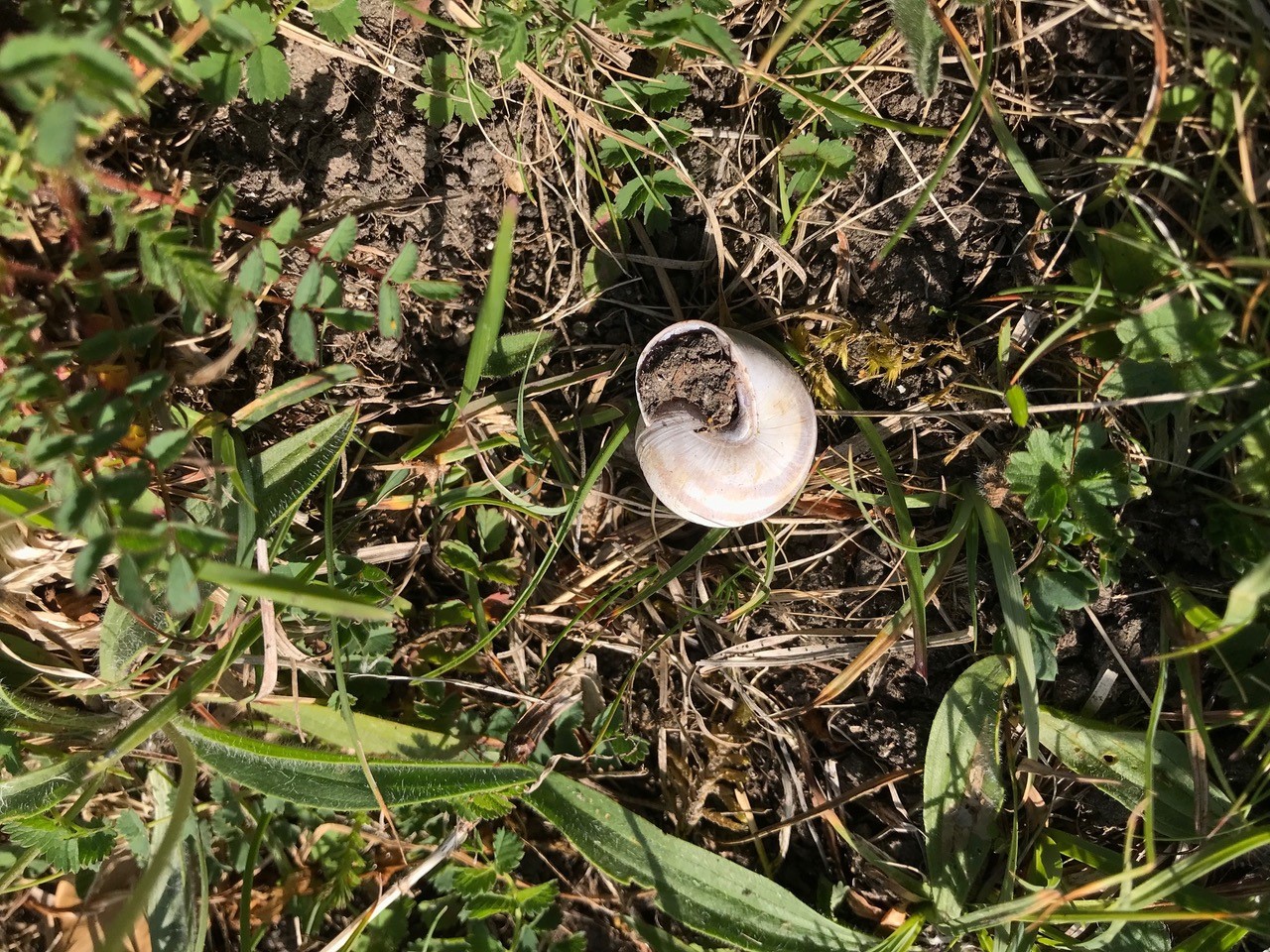
It’s time to fall in love with snails. Jean Vernon unravels some of the myths and magic regarding these creatures
Snails? What good are they? I hear you ask? Well you might be very surprised what different roles these unassuming characters play not just in your garden but in the greater environment too.
Food stuff
Snails. Love them or hate them they are part of the fragile natural ecosystem and have essential roles in nature.
Every creature is a pretty much a meal for something else and the mighty snail is food for a variety of birds and other creatures, some of them quite rare. In some countries snails are regarded as a delicacy and indeed were eaten in the UK too.

A few weeks ago I was intrigued to hear a tapping noise down the garden path. It was a sound I hadn’t heard before, so I ventured out carefully to see a beautiful spotted thrush with a snail in her beak, bashing it against a rock. I’d read about this but I had never, ever witnessed it myself. Thrushes eat snails. The broken shells, rich in calcium are then available for other birds and especially valuable at nesting time. Birds don’t store calcium and need it to make their egg shells days before they lay their brood.
Precious roles

Look a little closer at these creatures and start to understand that like every living creature they are part of the natural tapestry of life. Yes they may feast on some of your plants, especially young seedlings and shoots, but they also feed on dead and decaying matter, helping to break it down in to nutrient rich debris that will feed the soil and your garden plants.
Garden snails are quiet little souls, going about their business slowly but methodically, mostly at night. They lay eggs which hatch into tiny little snails complete with fragile shells that grow slowly until maturity at about 2 years. Have a closer look – baby snails are actually quite cute.
I can’t help but think of Brian the snail from the Magic Roundabout, a children’s series from the 60’s and 70’s, when I see a solitary snail in the garden. The only place I remove snails from my plants is in the greenhouse. I have a small population inside the glasshouse that do make a meal of some of my plants, but a little careful surveillance, especially at night when these critters are active, quickly identifies any vociferous munchers so that they can be moved outside.
Wildlife matters
It’s not just birds that eat garden snails. Hedgehogs will feed on them if there is a shortage of their favourite food, leaving the broken shells behind.

But one of the most intriguing and magical connections between wildlife and snails actually involves a bee. Now anyone that knows me, knows I’m a bit obsessed with bees. In fact it has been said that I’m a bit of a bee bore. But when I tell you that there’s a bee that nests inside empty snail shells, I think you’d be pretty impressed. Not only does the bee recycle an empty, waterproof shell, but she actually rotates it so that it doesn’t fill with rain, she weights it down with little stones so that it doesn’t get blown around and then she camouflages it with dozens of pieces of grass so that it is safe while her babies mature. The bee is a solitary bee called the bi colour mason bee (Osmia bicolor). The female mates soon after she emerges in spring and then sets about finding suitable snail shells to house her brood. Once she has found the right shell in the right place, she will start to nest, laying an egg inside and provisioning it with a ball of pollen, wetted with pollen. She lays around five eggs in each snail shell, each one in its own cell complete with food. Each cell is then sealed up with a ‘pesto’ like mastic made of chewed up leaves. When she has completed this mammoth task, she collects little stones to weigh the nest down and then sets off to gather stems of grass, flying astride like a witch on a broomstick. Each one carefully positioned to cover up the nest. It’s exhausting to just think about the endeavours of one female bee, and even more so when you discover that she will repeat this process creating nests in up to FIVE empty snail shells.
So the next time you see a snail or a snail in your garden spare a thought for the snail nester bee, more likely to be seen in southern counties and south wales and leave the empty shells in place. You just never know what part they could play in the secret life of your garden.










